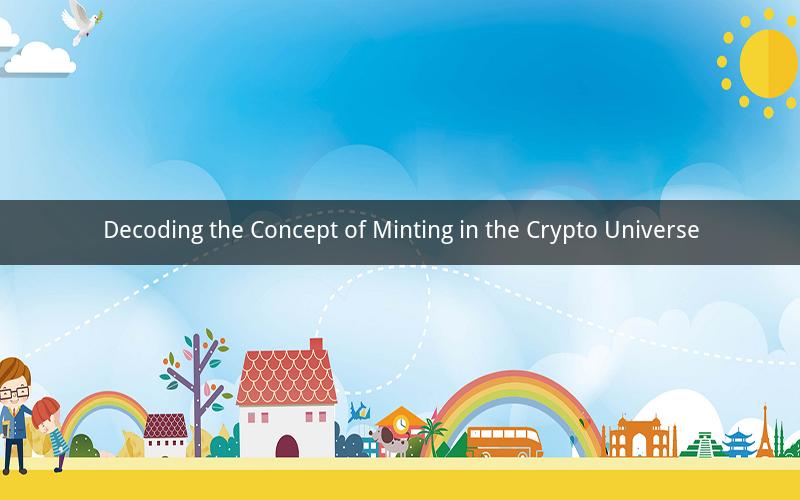
In the ever-evolving world of cryptocurrencies, the term "minting" has become increasingly prevalent. But what does minting in crypto actually mean? This article delves into the intricacies of minting, exploring its definition, significance, and various applications within the cryptocurrency ecosystem.
Definition of Minting in Crypto
At its core, minting in crypto refers to the process of creating new digital assets or tokens. This process is akin to printing new money, but instead of physical currency, it involves generating new entries in a blockchain network. By minting, blockchain networks can introduce new coins or tokens, expand their supply, and add value to the ecosystem.
How Minting Works
Minting typically involves the following steps:
1. A network protocol determines the rules and parameters for minting, including the frequency and quantity of new tokens to be created.
2. Users or nodes on the network can participate in the minting process, often by contributing computational power or storing data.
3. Once the required conditions are met, the network creates new tokens and adds them to the blockchain ledger.
4. These new tokens are then distributed to participants based on their contributions or as rewards for specific actions.
Significance of Minting
Minting plays a crucial role in the crypto ecosystem, serving several purposes:
1. Inflation Control: By creating new tokens, networks can manage inflation. This is especially important for networks aiming to mimic the supply and demand dynamics of fiat currencies.
2. Rewarding Participants: Minting rewards users who contribute to the network, fostering a sense of community and incentivizing participation.
3. Network Expansion: Minting enables networks to expand their reach and add more participants, thereby increasing their overall value and potential.
4. Introducing New Assets: Minting allows for the creation of new tokens, which can be used for various purposes, including decentralized finance (DeFi), gaming, and more.
Applications of Minting
Minting is utilized in various contexts within the crypto space:
1. Cryptocurrency Creation: The most common application of minting is the creation of new cryptocurrencies, such as Bitcoin (BTC), Ethereum (ETH), and Litecoin (LTC).
2. DeFi Platforms: Many DeFi platforms mint new tokens to facilitate transactions, provide liquidity, and incentivize participation.
3. Gaming: Minting is used in gaming platforms to create in-game assets, tokens, and NFTs (non-fungible tokens).
4. Smart Contracts: Minting can be integrated into smart contracts to create and manage unique digital assets.
5 Questions and Answers about Minting in Crypto
Question 1: What is the difference between minting and mining?
Answer: While both processes contribute to the creation of new tokens, minting is specific to the creation of new digital assets, while mining refers to the process of validating transactions and adding them to the blockchain.
Question 2: Can minting lead to inflation?
Answer: Yes, minting can lead to inflation, especially if the process is not carefully managed. However, many networks implement mechanisms to control inflation, such as limiting the number of new tokens created or adjusting the minting rate over time.
Question 3: How does minting contribute to the value of a cryptocurrency?
Answer: Minting can contribute to the value of a cryptocurrency by increasing its supply, fostering network growth, and providing incentives for participation. However, the actual impact on value depends on various factors, including market demand and the overall performance of the network.
Question 4: Can minting be used to create stablecoins?
Answer: Yes, minting can be used to create stablecoins. Stablecoins are designed to maintain a stable value by being backed by a reserve of assets, such as fiat currency or cryptocurrencies. Minting can be used to issue new stablecoins, while the reserve assets ensure their stability.
Question 5: Is minting a secure process?
Answer: Minting can be a secure process, as it typically involves the use of cryptographic algorithms and blockchain technology. However, the security of the minting process also depends on the overall security of the network and the implementation of the minting protocol.